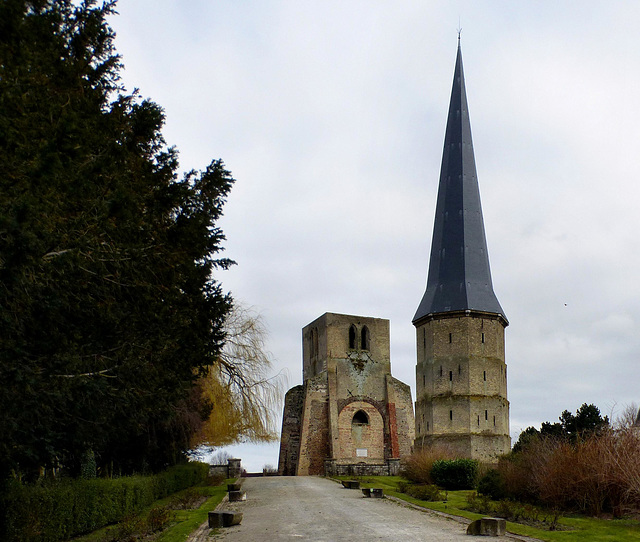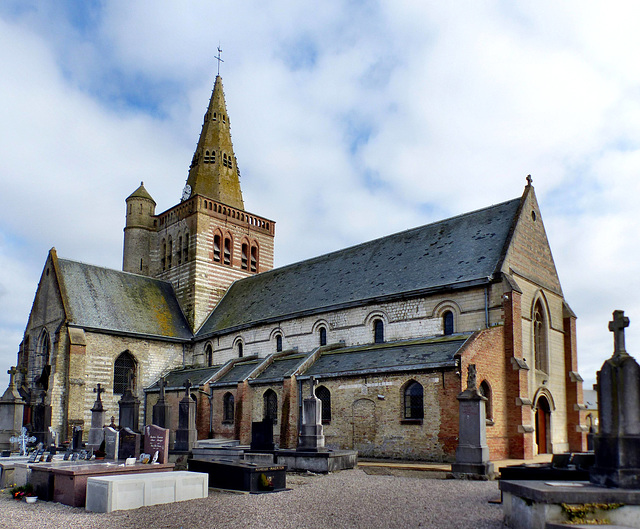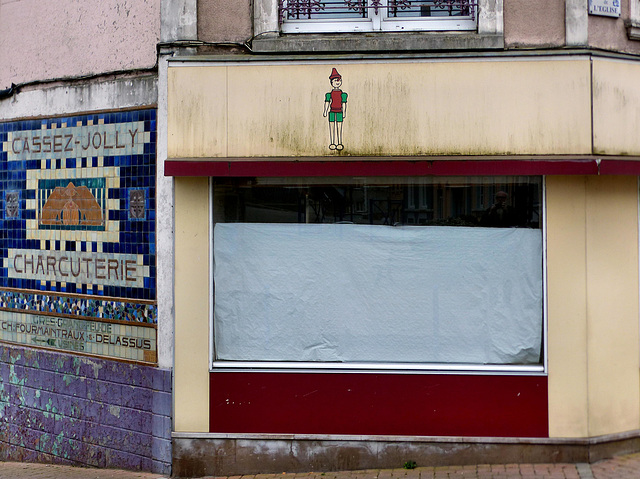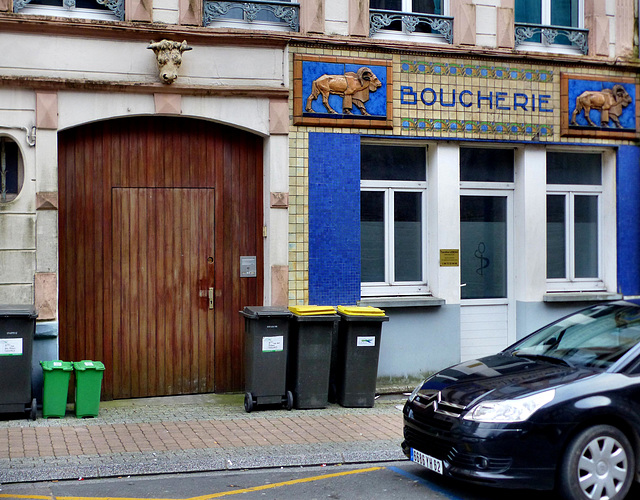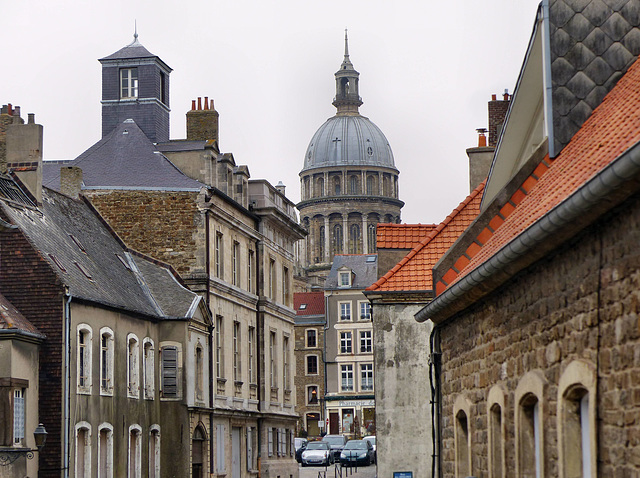
Nord / Pas-de-Calais
A collection of photos that all have in common, that they were taken in the departments Nord (59) and Pas-de-Calais (62) in the very north of France.
Bergues - Abbaye de Saint-Winoc
These towers are all, what still can be found of the former Abbaye de Saint-Winoc, that had be founded in medieval times over the tomb of Saint Winoc, a hermit who had lived a pious life here in the 7th century.
The abbey got completely destroyed during the French Revolution, only the "Tour Carrée" survived. The octagonal "Tour Pointue" was rebuilt in 1812.
Steene - Saint Martin
The Eglise Saint-Martin probably dates back to the 11th/12th century, but got altered and enlarged in the 15th century in Gothic style. The church was locked.
Cappelle-Brouck - Saint-Jacques
Probably since the beginning the Église Saint-Jacques is surounded by the village´s graveyard. The erection started in 1169. Philip I (aka "Philippe d'Alsace"), count of Flandres and founder of Cappelle-Brouck, endowed a relic of Saint Jaques to this church, when he returned from his pilgrimage to Santiago de Compostella in 1172.
So this church was a halt for many pilgrims heading south (or returning). I found that it took 85 days from here to Santiago, what is about 25kms/day.
The once Romansque basilica, got altered quite often over the centuries in different styles. During WWII it got severely damaged, so that the westen facade had to be rebuilt after a collapse in 1950.
Cappelle-Brouck - Saint-Jacques
Probably since the beginning the Église Saint-Jacques is surounded by the village´s graveyard. The erection started in 1169. Philip I (aka "Philippe d'Alsace"), count of Flandres and founder of Cappelle-Brouck, endowed a relic of Saint Jaques to this church, when he returned from his pilgrimage to Santiago de Compostella in 1172.
So this church was a halt for many pilgrims heading south (or returning). I found that it took 85 days from here to Santiago, what is about 25kms/day.
The once Romansque basilica, got altered quite often over the centuries in different styles. During WWII it got severely damaged, so that the westen facade had to be rebuilt after a collapse in 1950.
Samer - Charcuterie
The small town of Samer developed around the Abbaye Saint-Wulmer (founded in 668) and so the Flemish name for the town is still Sint-Wulmaars. The abbey meanwhile is in ruins. The nice mosaic of the Charcuterie Cassez-Jolly still exists, though the shop is closed down.
Samer - Boucherie
The small town of Samer developed around the Abbaye Saint-Wulmer (founded in 668) and so the Flemish name for the town is still Sint-Wulmaars. The abbey meanwhile is in ruins and where a boucherie
was once is now the office of a nurse.
Samer - Saint Martin
The small town of Samer developed around the Abbaye Saint-Wulmer (founded in 668) and so the Flemish name for the town is still Sint-Wulmaars. The abbey meanwhile is in ruins.
Saint-Martin was erected within the 16th century. Houses are built directly onto the church´s western facade, so that the entrance of the church is now between the buildings.
Samer - Saint Martin
The small town of Samer developed around the Abbaye Saint-Wulmer (founded in 668) and so the Flemish name for the town is still Sint-Wulmaars. The abbey meanwhile is in ruins.
Saint-Martin was erected within the 16th century. Inside is this baptismal font, dated to the 11th century. The font is damaged, but very unusual for that age.
Boulogne-sur-Mer - Notre-Dame
In Roman times Bononia (now "Boulogne-sur-Mer") was the major Roman port for trade and communication with Britain. Caesar's invasions of Britain started right here.
From the 9th century on Boulogne was the capital of the "County of Boulogne". Godfrey of Bouillon and Baldwin I of Jerusalem, prominent figures in the First Crusade, were both Counts of Boulogne.
The old town, located of a hill, is surrounded by ramparts since the 13th century. In the center was a large Romanesque Cathedral, that attracted many pilgrims over the centuries, displaying a miraculous statue of the Virgin. This church got demolished (and the statue burned) during the French Revolution.
The Notre-Dame basilica, with the 100 metres high dome, seen here, was built between 1827 and 1875 on the site of the old cathedral.
Jump to top
RSS feed- Latest items - Subscribe to the latest items added to this album
- ipernity © 2007-2024
- Help & Contact
|
Club news
|
About ipernity
|
History |
ipernity Club & Prices |
Guide of good conduct
Donate | Group guidelines | Privacy policy | Terms of use | Statutes | In memoria -
Facebook
Twitter

